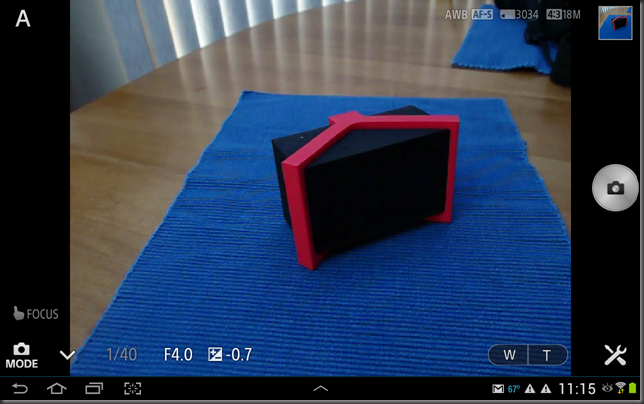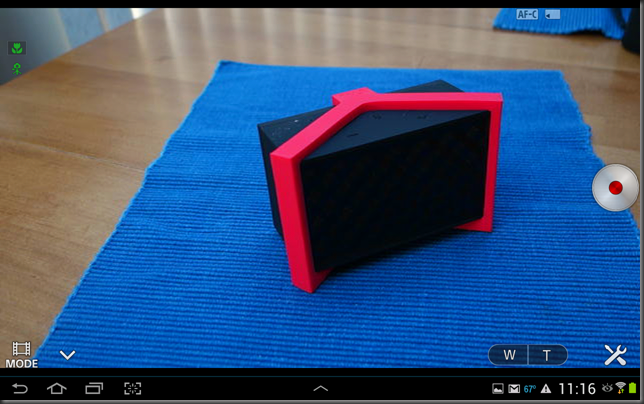- Photo Safaris
- Alaska Bears & Puffins World's best Alaskan Coastal Brown Bear photo experience. Small group size, idyllic location, deluxe lodging, and Puffins!
- Participant Guestbook & Testimonials Candid Feedback from our participants over the years from our photo safaris, tours and workshops. We don't think there is any better way to evaluate a possible trip or workshop than to find out what others thought.
- Custom Photo Tours, Safaris and Personal Instruction Over the years we've found that many of our clients & friends want to participate in one of our trips but the dates we've scheduled just don't work for them or they'd like a customized trip for their family or friends.
- Myanmar (Burma) Photo Tour Myanmar (Burma) Photo Tour December 2017 -- with Angkor Wat option
- Reviews Go hands-on
- Camera Reviews Hands-on with our favorite cameras
- Lens reviews Lenses tested
- Photo Accessories Reviews Reviews of useful Photo and Camera Accessories of interest to our readers
- Useful Tools & Gadgets Handy tools and gadgets we've found useful or essential in our work and want to share with you.
- What's In My Camera Bag The gear David Cardinal shoots with in the field and recommends, including bags and tools, and why
- Articles About photography
- Getting Started Some photography basics
- Travel photography lesson 1: Learning your camera Top skills you should learn before heading off on a trip
- Choosing a Colorspace Picking the right colorspace is essential for a proper workflow. We walk you through your options.
- Understanding Dynamic Range Understanding Dynamic Range
- Landscape Photography Tips from Yosemite Landscape Photography, It's All About Contrast
- Introduction to Shooting Raw Introduction to Raw Files and Raw Conversion by Dave Ryan
- Using Curves by Mike Russell Using Curves
- Copyright Registration Made Easy Copyright Registration Made Easy
- Guide to Image Resizing A Photographers' Guide to Image Resizing
- CCD Cleaning by Moose Peterson CCD Cleaning by Moose Peterson
- Profiling Your Printer Profiling Your Printer
- White Balance by Moose Peterson White Balance -- Are You RGB Savvy by Moose Peterson
- Photo Tips and Techniques Quick tips and pro tricks and techniques to rapidly improve your photography
- News Photo industry and related news and reviews from around the Internet, including from dpreview and CNET
- Getting Started Some photography basics
- Resources On the web
- My Camera Bag--What I Shoot With and Why The photo gear, travel equipment, clothing, bags and accessories that I shoot with and use and why.
- Datacolor Experts Blog Color gurus, including our own David Cardinal
- Amazon Affiliate Purchases made through this link help support our site and cost you absolutely nothing. Give it a try!
- Forums User to user
- Think Tank Photo Bags Intelligently designed photo bags that I love & rely on!
- Rent Lenses & Cameras Borrowlenses does a great job of providing timely services at a great price.
- Travel Insurance With the high cost of trips and possibility of medical issues abroad trip insurance is a must for peace of mind for overseas trips in particular.
- Moose Peterson's Site There isn't much that Moose doesn't know about nature and wildlife photography. You can't learn from anyone better.
- Journeys Unforgettable Africa Journeys Unforgettable -- Awesome African safari organizers. Let them know we sent you!
- Agoda International discounted hotel booking through Agoda
- Cardinal Photo Products on Zazzle A fun selection of great gift products made from a few of our favorite images.
- David Tobie's Gallery Innovative & creative art from the guy who knows more about color than nearly anyone else
- Galleries Our favorite images
Sony DSC-QX100 ‘Smart Lens’: Product in search of a purpose
Sony DSC-QX100 ‘Smart Lens’: Product in search of a purpose
Submitted by David Cardinal on Tue, 01/21/2014 - 08:23
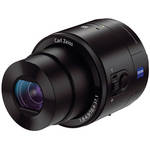 Featuring an excellent 1” sensor and Zeiss f/1.8 zoom lens packed into a solidly-made black metal cylinder, the Sony QX100 is a nice piece of hardware. Unfortunately awkward ergonomics and seriously deficient software leave it adrift as more of a curiosity or a niche product than any type of segment-defining breakthrough. Let’s look at what it does right, and wrong, and whether it still might be in your future…
Featuring an excellent 1” sensor and Zeiss f/1.8 zoom lens packed into a solidly-made black metal cylinder, the Sony QX100 is a nice piece of hardware. Unfortunately awkward ergonomics and seriously deficient software leave it adrift as more of a curiosity or a niche product than any type of segment-defining breakthrough. Let’s look at what it does right, and wrong, and whether it still might be in your future…
With the QX100 and its smaller sibling the Sony QX10 Sony has tried to stem the tide of smartphone cameras that is crushing the point and shoot market by joining forces with them. The QX products package a sensor, lens, and microSD card into a separate package that relies on a phone or tablet for its LCD and controls. That configuration allows a QX to be used as a remote camera over WiFi or clamped onto a smartphone for use as a kind of super camera for the phone.
Using a ‘Smart Lens’
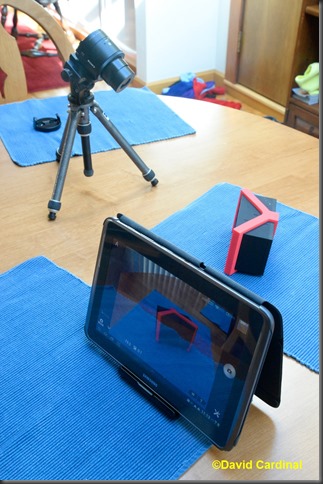 Unfortunately, the awkward clamping system creates a total unit that is larger than some micro-4/3 systems, and certainly more awkward to pocket than the Sony DSC-RX100 II from which the Sony QX100 borrows its sensor. To retain the convenience of your smartphone’s slim shape you’d need to constantly be attaching and removing the clamped lens. Admittedly the process is simpler if you own a Sony smartphone, but most folks don’t.
Unfortunately, the awkward clamping system creates a total unit that is larger than some micro-4/3 systems, and certainly more awkward to pocket than the Sony DSC-RX100 II from which the Sony QX100 borrows its sensor. To retain the convenience of your smartphone’s slim shape you’d need to constantly be attaching and removing the clamped lens. Admittedly the process is simpler if you own a Sony smartphone, but most folks don’t.
Fortunately the pairing of the QX100 with the phones and tablets I tried was pretty easy. You can either use NFC or type in the 10-digit passcode found under the battery door. Image quality is excellent, since the QX100 has the same guts as the top-rated Sony DSC-RX100 II point and shoot. Battery life is another matter however, as the QX100 seemed to give up the ghost quite quickly – possibly due to the heavy and required use of WiFi and the small battery size.
Unlike the RX100, though, the QX100 does not allow shooting in Raw mode – only JPEG, and video is recorded at the odd resolution of 1440 x 1080 instead of full 1080p (1920 x 1080). These shortcomings mean that purists would still be better off spending the extra $200 for a full Sony RX100 II rather than compromising on this hybrid approach.
Seriously disappointing software
Given how much work Sony has put into various mobile and WiFI-controlled camera systems, I was expecting great things from the version of PlayMemories that is used to control the QX cameras. Unfortunately, what I found, at least on Android, was a crippled application that has less functionality than almost any other camera app I’ve seen. You can only run the camera in one of the Program modes or Aperture for starters, and you can’t change common settings like ISO at all. At least you can put the camera in Aperture mode and control the Exposure Compensation. Focus, as you’d expect, is done by touching the display, which worked well.
Screenshot of the PayMemories Mobile App in Photo Mode.
NOTE that only settings in bright white can be changed. Others are for information only
Screenshot in Video Mode:
Even the image transfer options are really limited. You can’t move images or videos from the QX, only copy them. Camera information is practically non-existent. You aren’t provided with time remaining in video mode (and in fact something either the camera or tablet fell asleep and dropped the connection when I tried to record a long video), battery status, or just about any other camera info besides a few pieces of essential shooting data.
Help may be on the way
Fortunately, the camera firmware and of course the smartphone application are both upgradeable. Sony has already improved the smartphone app a couple times, and it has promised a firmware update that will allow the QX100 to record full HD video and to operate in Shutter Priority. While those changes alone aren’t all that exciting, it may mean that Sony will be able to continue fleshing out the camera’s feature set over time.
WiFi is an Achilles Heel
The WiFi connection, while allowing for remote shooting, is also an Achilles heel for the QX. Unless you turn off all previews and downloads, your phone is hung waiting for one image to be processed (and optionally transferred or displayed) before it can shoot again. It doesn’t have to be that way, as the Nikon WiFi dongles and software do a much better job at this. If Sony was the only game in town perhaps this would be acceptable, but with so many point and shoot, mirrorless and even inexpensive DSLR cameras having built-in or easy-to-add WiFi this implementation doesn’t stack up.
Making your smartphone Zoom
Almost no smartphones feature a real zoom capability. That’s one place where the QX100 adds real value. Featuring a 28-100mm equivalent zoom, nearly 4:1, with excellent image quality throughout the range, the QX100 will definitely expand your shooting options. These two images were taken at 28mm and at 100mm. Clicking on them will get you the untouched JPEGs straight from the camera.
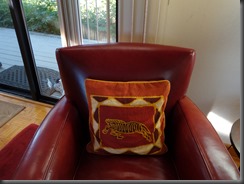 28mm indoor image (click for full resolution)
28mm indoor image (click for full resolution)
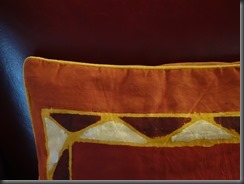 100mm indoor image (click for full resolution)
100mm indoor image (click for full resolution)
Should you take a leap of faith and buy one?
Anyone purchasing a Sony Qx100 or Sony QX10 is taking a serious leap of faith that Sony will bring more of its imaging, networking, and software technology to market in future firmware and software updates for the product.
 Sample landscape image (click for full resolution)
Sample landscape image (click for full resolution)
Sony QX100 Hardware Specs:
- 20.2 effective megapixel 1.0" Exmor R BSI CMOS sensor
- 28-100mm equivalent 3.6x optical zoom F1.8-4.9 lens
- Limited manual control - aperture priority, auto and exposure compensation
- Optical SteadyShot image stabilization
- MicroSD card slot
- NFC and Wi-Fi connectivity

